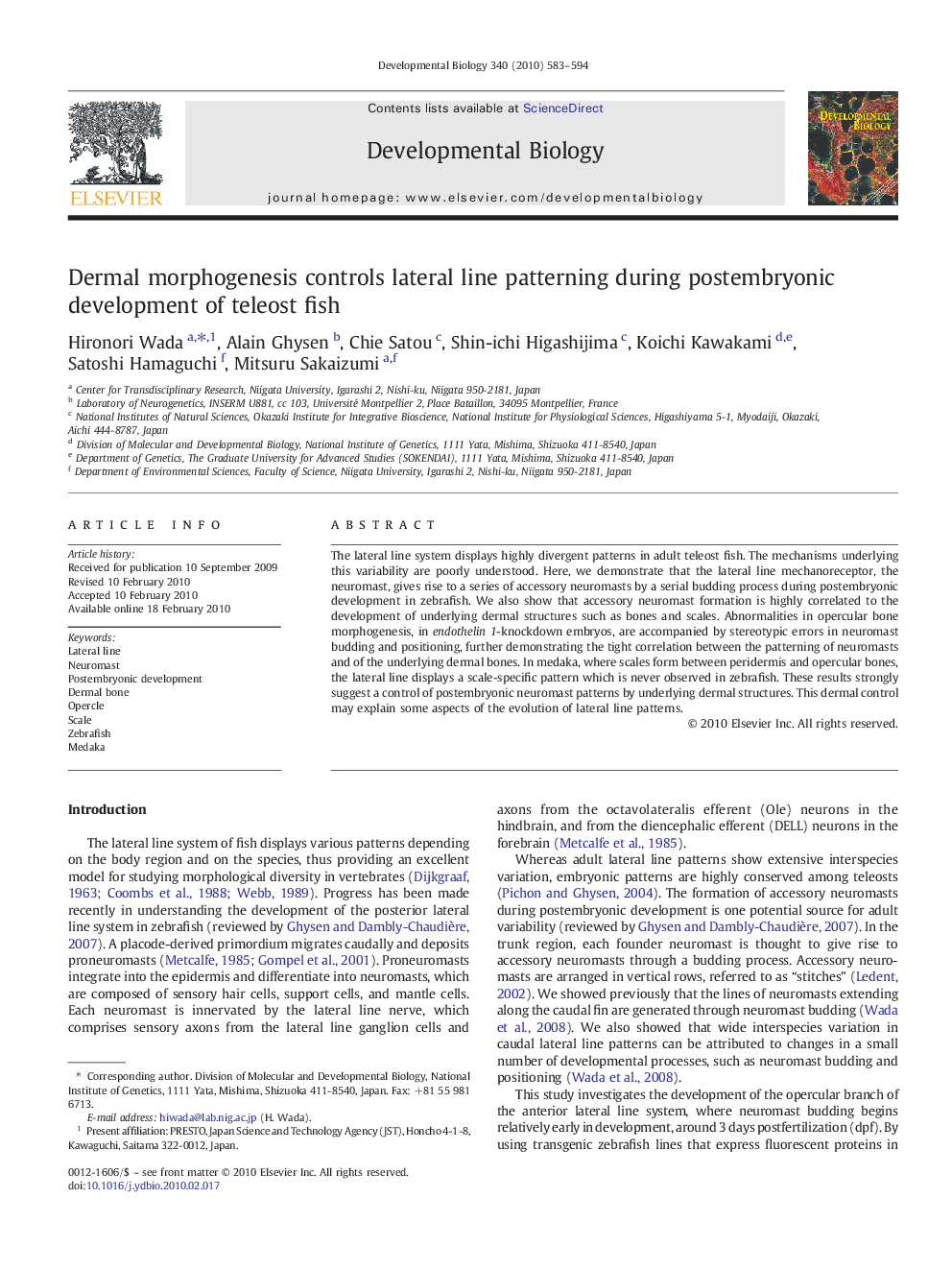| Article ID | Journal | Published Year | Pages | File Type |
|---|---|---|---|---|
| 8468346 | Developmental Biology | 2010 | 12 Pages |
Abstract
The lateral line system displays highly divergent patterns in adult teleost fish. The mechanisms underlying this variability are poorly understood. Here, we demonstrate that the lateral line mechanoreceptor, the neuromast, gives rise to a series of accessory neuromasts by a serial budding process during postembryonic development in zebrafish. We also show that accessory neuromast formation is highly correlated to the development of underlying dermal structures such as bones and scales. Abnormalities in opercular bone morphogenesis, in endothelin 1-knockdown embryos, are accompanied by stereotypic errors in neuromast budding and positioning, further demonstrating the tight correlation between the patterning of neuromasts and of the underlying dermal bones. In medaka, where scales form between peridermis and opercular bones, the lateral line displays a scale-specific pattern which is never observed in zebrafish. These results strongly suggest a control of postembryonic neuromast patterns by underlying dermal structures. This dermal control may explain some aspects of the evolution of lateral line patterns.
Related Topics
Life Sciences
Biochemistry, Genetics and Molecular Biology
Cell Biology
Authors
Hironori Wada, Alain Ghysen, Chie Satou, Shin-ichi Higashijima, Koichi Kawakami, Satoshi Hamaguchi, Mitsuru Sakaizumi,
